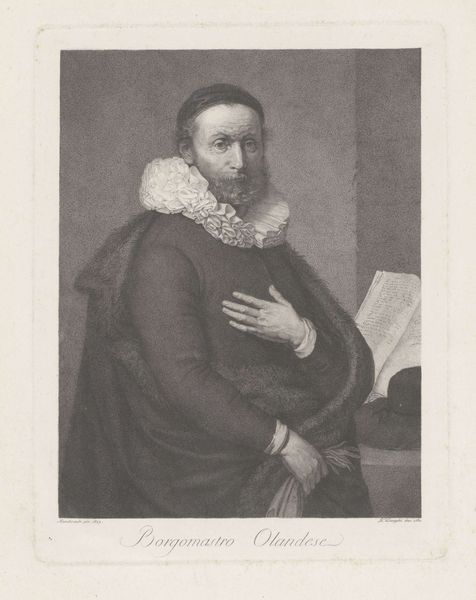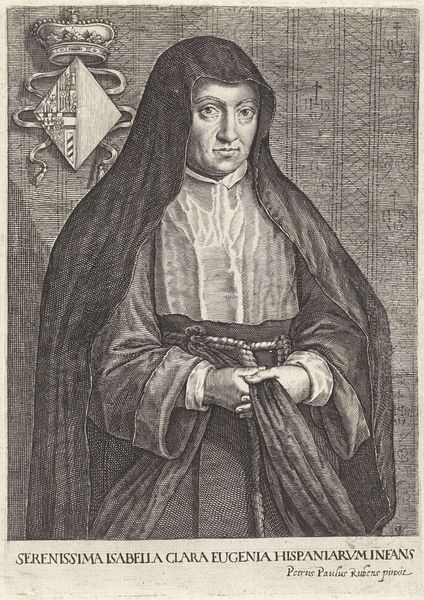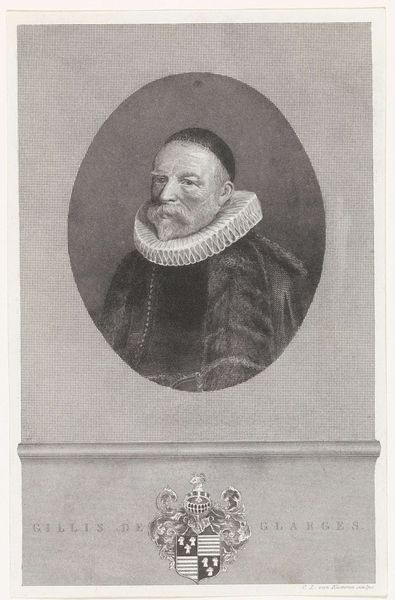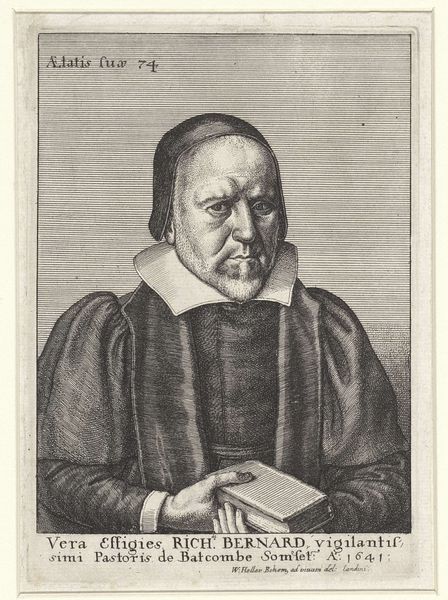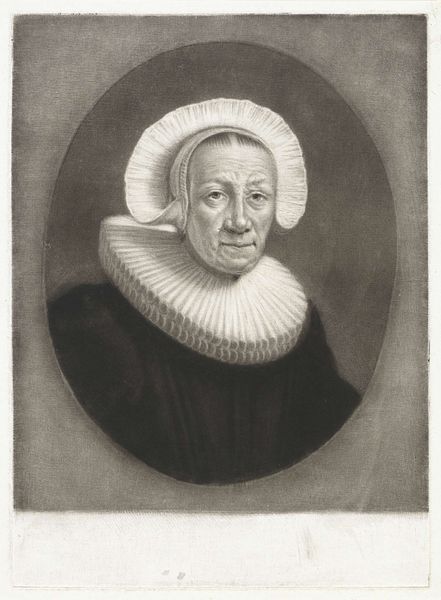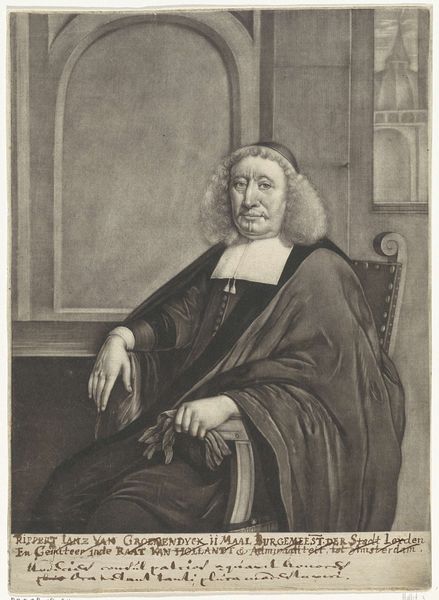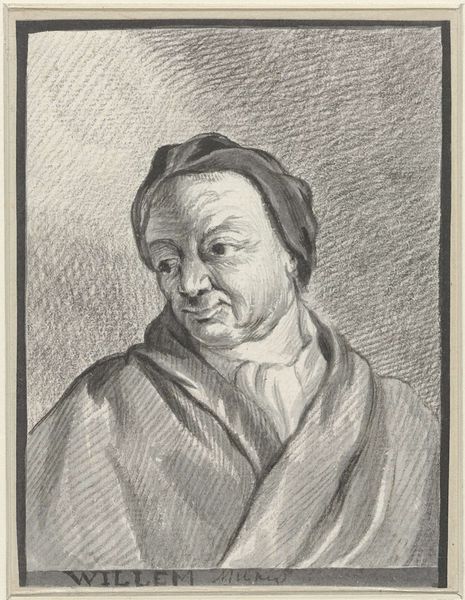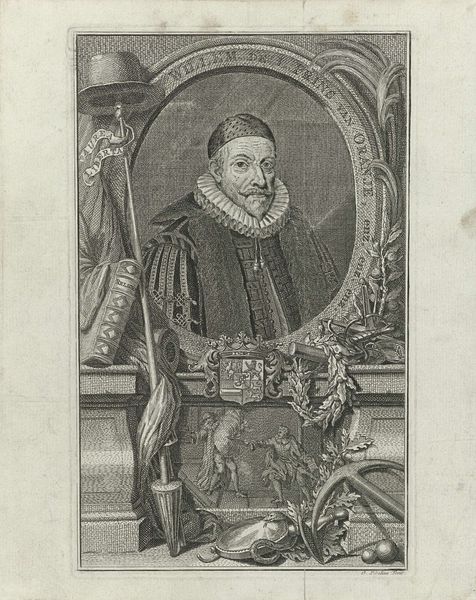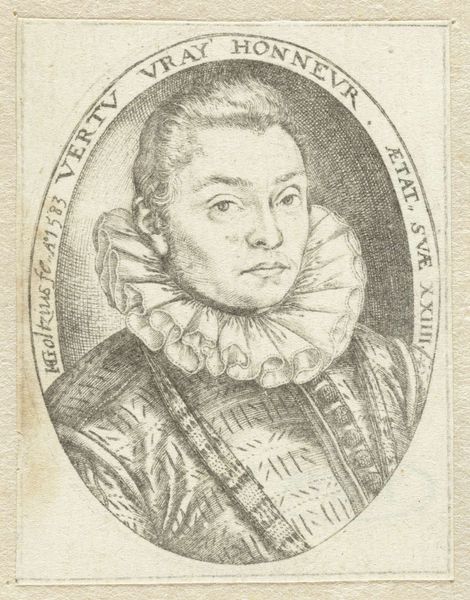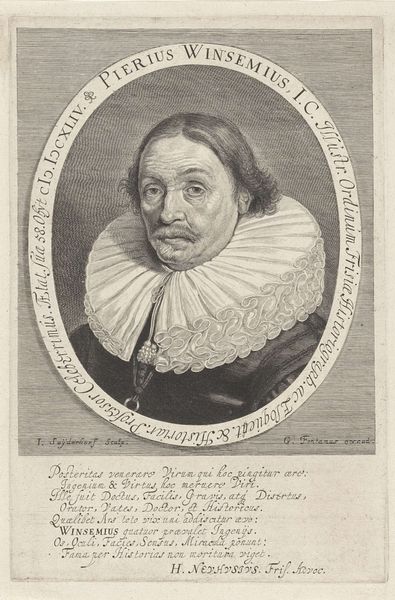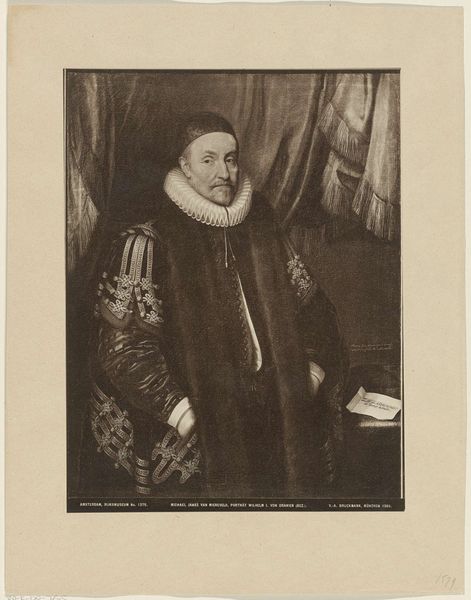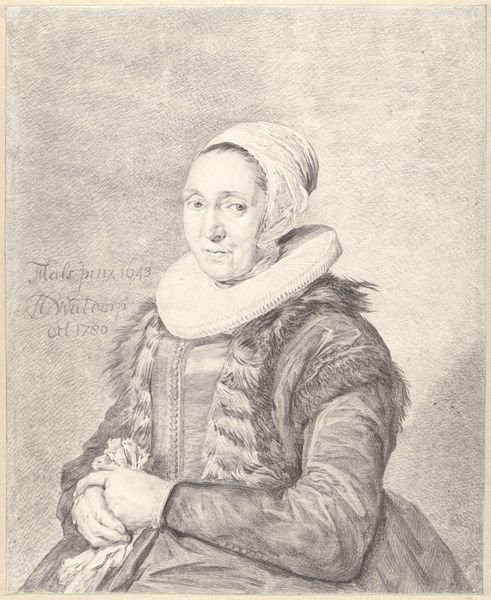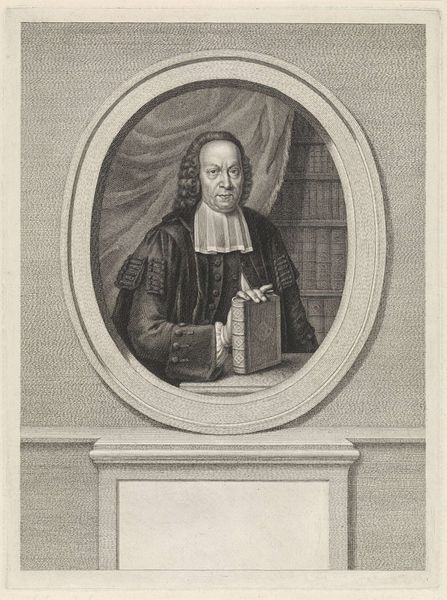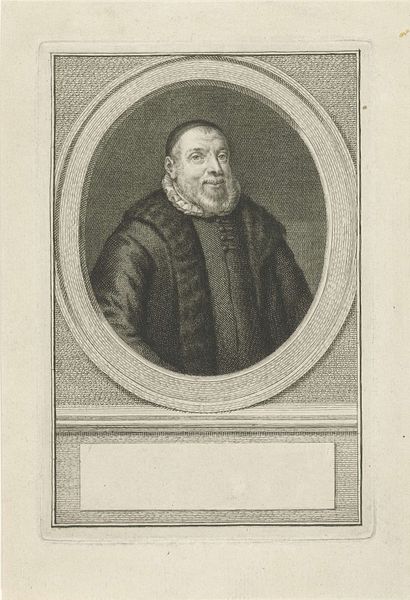
print, engraving
#
portrait
#
baroque
#
dutch-golden-age
# print
#
figuration
#
line
#
engraving
#
realism
Dimensions: height 199 mm, width 123 mm
Copyright: Rijks Museum: Open Domain
Curator: Let's examine this piece. It's a portrait entitled "Portret van Catherine Lethieullier" by Isaack Luttichuys, created in 1656. It's an engraving, offering us a glimpse into Dutch Golden Age portraiture. Editor: My initial reaction is that it’s…austere. There’s a formality to it that suggests a very specific societal position. The rigid collar and the restrained color palette feel very deliberate in communicating power. Curator: Indeed. The use of line in this engraving is masterful, notice the intricate cross-hatching that gives form and depth, almost mimicking the textures of fabric. The artist clearly emphasizes linear precision over tonal gradation. Consider also the subtle play of light and shadow that defines her face, achieving a certain realism. Editor: Right, the face. To me, her expression is unreadable. But it provokes questions. Who was Catherine Lethieullier? The text at the bottom, "born ye 8 Jan. 1587," locates her historically, while indicating marital status situates her socially in a very direct way. I’m interested in her lived experience. Was this a commissioned portrait solidifying her family’s status, and how does her representation play into gendered power dynamics of the time? Curator: A valuable interpretation. Formally, it is interesting to note the restrained palette and the relatively simple composition which serve to draw our eyes directly to the sitter's face, placing her very distinctly in the immediate foreground. Editor: That foregrounding is doing a lot of work. By putting Catherine so boldly in the frame, the artist isn't just creating an image, they are solidifying her existence and cementing her position within the cultural narrative. It gives a voice, of sorts, to a woman of that era who, in most historical narratives, would have likely remained unseen. Curator: Yes, the artwork serves as an excellent example of formal qualities coming together to enhance the sitter's prominence, while also encapsulating stylistic characteristics from its time. Editor: Seeing Catherine through this lens invites me to ponder on issues of representation and access to representation itself, highlighting how visual culture participates in either amplifying or silencing certain voices. A single image invites conversations of societal dynamics that might go unnoticed otherwise.
Comments
No comments
Be the first to comment and join the conversation on the ultimate creative platform.
